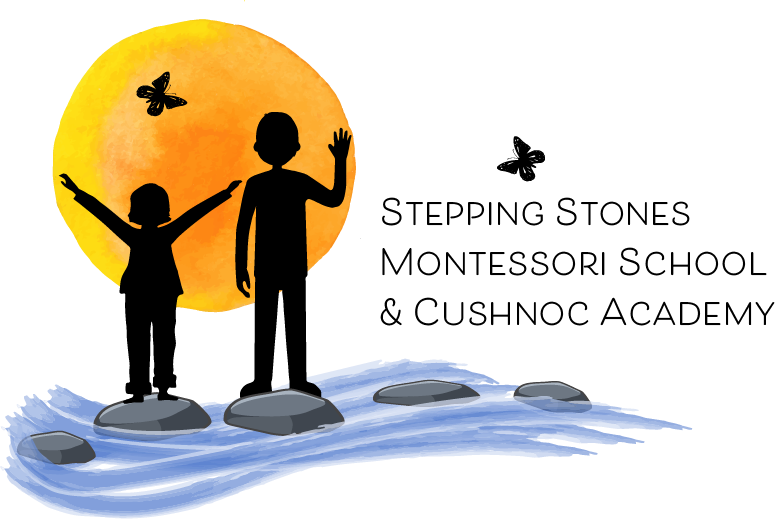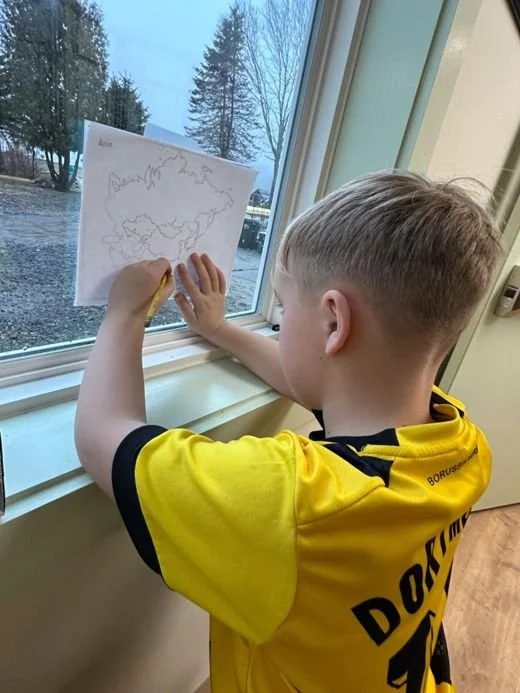Welcome to the World of Montessori
In carrying out our ambitious mission, we are guided by hallmarks of the Montessori Method and by our combined decades’ worth of experience educating children with a blend of Montessori, hands-on, and traditional methods.
Montessori Method
Maria Montessori, a 20th century educational pioneer and the first female physician in Italy, developed what has become known as the Montessori method. At the heart of this approach is the observation of the child. The child has within a natural desire to learn. The role of the teacher is to prepare a learning environment that awakens this desire and to recognize “sensitive periods” in the development of each individual child.
Through her observation of challenged, typical, and gifted children, Montessori developed a curriculum of hands-on materials. These learning tools are made from natural materials, are self-correcting, increase in difficulty over time, and are purposefully arranged in the room.
Although the Montessori method was developed decades ago, it is even more relevant today. In a world that often is over-stimulating, the simple, yet precise, philosophy and materials of Montessori fill the basic needs of children today.
Philosophical Orientation of Stepping Stones Montessori School
Click here for article "Directing Without Disturbing" by Carrie Gervais, Co-Director.
Montessori schools vary in their adherence to the traditional Montessori Method. We are a progressive Montessori school. While the bulk of the activities are Montessori activities in Pre K to Grade 3, we also incorporate activities that we feel Maria Montessori would have embraced today, including new self-correcting, hands-on approaches, and practice aids for Elementary children.
In our collective teaching experience, we have found the traditional Montessori materials to be among the most effective of any, anywhere. So in our classrooms, the majority of the work will be traditional Montessori activities, especially in the Primary and beginning Lower Elementary years.
As children mature, they are able to handle abstract work, especially when concepts have been initially presented with hands-on Montessori materials. Their initial Montessori experiences have prepared and motivated students to branch out into reading and writing, scored assignments, research, and rigorous memorization (with plenty of fun options!) Older students in Cushnoc Academy challenge themselves, support each other's learning, and accept specific feedback from teachers and other students.
Elements of Montessori at Stepping Stones and Cushnoc Academy
Multiage Grouping--Our classrooms are multi aged. In the Primary Program (preschool and kindergarten), 3-6 year olds work alongside one another. This allows children to work at a level higher than, lower than, or equivalent to their same age peers, and have others at their own ability level in the room. The Lower Elementary Program groups 6-9 year olds together (grades 1-3) the Upper Elementary Program is for 9-12 year olds (grades 4-6), and the Middle School Program is for 12-14 year olds (grades 7 & 8). We cannot stress enough the advantages, over time, of multi aged grouping. The youngest learn to try new things as they watch older children, who become leaders and practice skills. In the elementary programs the group stays together for many years; children learn how to solve problems and include one another.
Choice of Activity and Uninterrupted Work Time--A portion of the school day is devoted to individual choice time to work with the materials. Because there is generally one set of each material, students naturally select a range of activities. This approach allows them to experience the excitement of learning. Children develop better concentration skills since they are given opportunities to complete work without trappings of a strictly rigid schedule. The teacher observes what choices the children make and do not make, and provide limits as necessary. Children feel in control of learning and build a love of learning over time.
As children mature, especially in grades K and up, work choices are given parameters through planning, contracts, due dates, and discussion with the child. Choice always exists in the day, but requirements are also part of the day. For example, sometime during the week, an elementary child must do geography work, but when, what, and for how long are usually choices. We recognize that children sometimes avoid work due to frustration. In these cases, the teacher takes a more active role in helping the child experience success at his or her own level.
Matching Instruction to the Sensitive Period--Each child has particular times when he or she can most easily learn new skills. Our younger classrooms allow the teachers to match new skills and concepts to each child’s “sensitive periods,” preventing both the frustration and boredom that can occur with whole group instruction alone.
If a child is presented with a skill too early, or when not interested, especially in the early years, repercussions can result. A child may become resistant to learning. Learning of prerequisite skills may not have taken place. For example, we encourage children to build words with letter sounds (using the “movable alphabet” material) before we ask them to read. Fine motor skills are developed with practical life activities before writing is expected. The reverse is also true—if we wait too long to present skills, the most "sensitive period" of learning may have passed. For example, many children learn phonetic skills easily at a certain developmental stage, and the learning road is longer if these skills are not presented then.
Control of Error--The Montessori materials in the classrooms have built-in controls for error, or models that make the correct skill or information evident. This feature enables the teachers to be facilitators, working with individuals or small groups during most of the day.
Uniqueness of Each Child and Individualized Instruction--Our daily imperative is to help each child take the next step each day in his or her own learning. We use individualized instruction to achieve this goal. The uninterrupted work period, choice of activities and materials, and multiaged setting allow us to maximize instruction with attention to each child’s unique learning style.
The value of large group instruction before Grade 4 is somewhat limited. It is more difficult, especially before grade 4, to increase children’s skills by delivering lessons primarily to a whole group. Most instruction should be geared toward individuals/small groups who are ready for the skill. We do use whole group instruction to present background information for work, appreciation of literature, and discussion of classroom behaviors and routines. As children mature and become abstract learners, they are increasingly able to learn skills in a group.
Encouragement of Independence--The physical arrangement of the Montessori classroom is set up so that children may be independent in the room, free to access materials and go about their work with little help from teachers. They are encouraged to be independent in care-of-self activities (such as zipping and tying), care-of-environment activities (such as putting away materials), and in their work.
Freedom Within Limits--Some wonder if the less restrictive schedule and the honoring of children’s choices make for an unstructured classroom. To the contrary, Montessori environments carry appropriate expectations and allow a child to develop an internal structure over time. The children are allowed freedom in their work time choices, but it is a freedom within appropriate limits.
"The first essential for the child’s development is concentration. The child who concentrates is immensely happy.”
—Maria Montessori
The child in this picture is arranging the blocks from energy, through places all the way through the universe, including our own school.
Geography studies start early at our school. Students work with hands on continent puzzles, progress to studying the countries within a continent, and create a variety of maps. They also research countries and cultures over the years.
Impressions built by using a variety of Montessori materials build number sense used throughout life.
Classification of animals using a specialized chart. Students will master which animals belong in each class.
These students were challenged to create a sailing ship as part of studying explorers. The ship needed to stay afloat, so they needed to test out prototypes.





